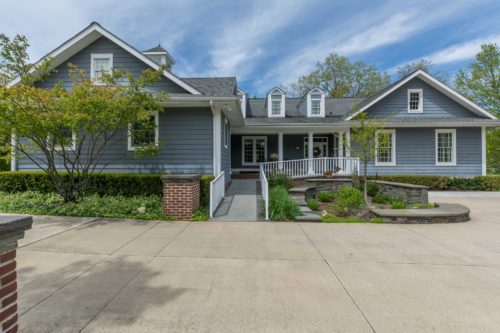Prepare Your House So You Can Age-In-Place

If you are like most Americans, you want to live to a ripe old age in your own home. That’s called “aging in place.”
If that’s your goal, you may also want to join a growing number of Americans who are taking steps to modify their houses to make them safe and comfortable for stiff knees and “fuzzy” eyesight.
Modifications make a lot of financial sense. With the average annual cost of assisted living at $67,000 and nursing home care at $120,000 in Delaware (2018) you will likely save money over the long run by investing in aging-in-place home improvements. Also, long-term care insurance may help cover some of the costs AND home improvements are not counted against you if you are planning to apply for Medicaid.
Here are some of the most popular home improvements to consider if aging in place is on your mind.
In the bathroom:
- Install a shower with a zero-threshold entry (no curb) to minimize tripping and to make it accessible for a wheelchair.
- Add a shower chair and a hand-held showerhead.
- Upgrade the toilet to comfort-height of 17-19 inches off the ground to make getting on and off easier. (You can also buy a toilet seat extender, which sits on top of the existing toilet seat.)
- Install grab bars near the toilet and in the shower.
In the kitchen:
- Create counters at multiple heights to have the option to sit or stand when preparing meals.
- Install an under-the-counter microwave instead of one overhead.
- Add pull-out shelves in cabinets.
Throughout the home:
- Install nonslip floors, such as textured stone or linoleum.
- Increase lighting.
- Install remote controls for lights and window coverings.
- Lower electrical switches and raise outlets.
- Change doorknobs to lever-style handles and cabinet knobs to handles.
- Move the master bedroom to the first floor and install a bathroom if necessary. Move the laundry to the main floor, too.
- Add a ramp to the entrance and widen hallways/doorways to accommodate a wheelchair.
Many of these options, and more, are thoughtfully being included in new construction for those who want to purchase aging-in-place-ready homes. Custom homes being built for some of our disabled veterans are filled with innovative ideas. You can also consult a design or home improvement specialist who has experience with aging-in-place features.
Planning ahead will help ease your worries about the future. The same is true of estate planning. A comprehensive estate plan can help you prepare for expenses you may face from injury or illness as you grow older – another critical step to help you age-in-place.
